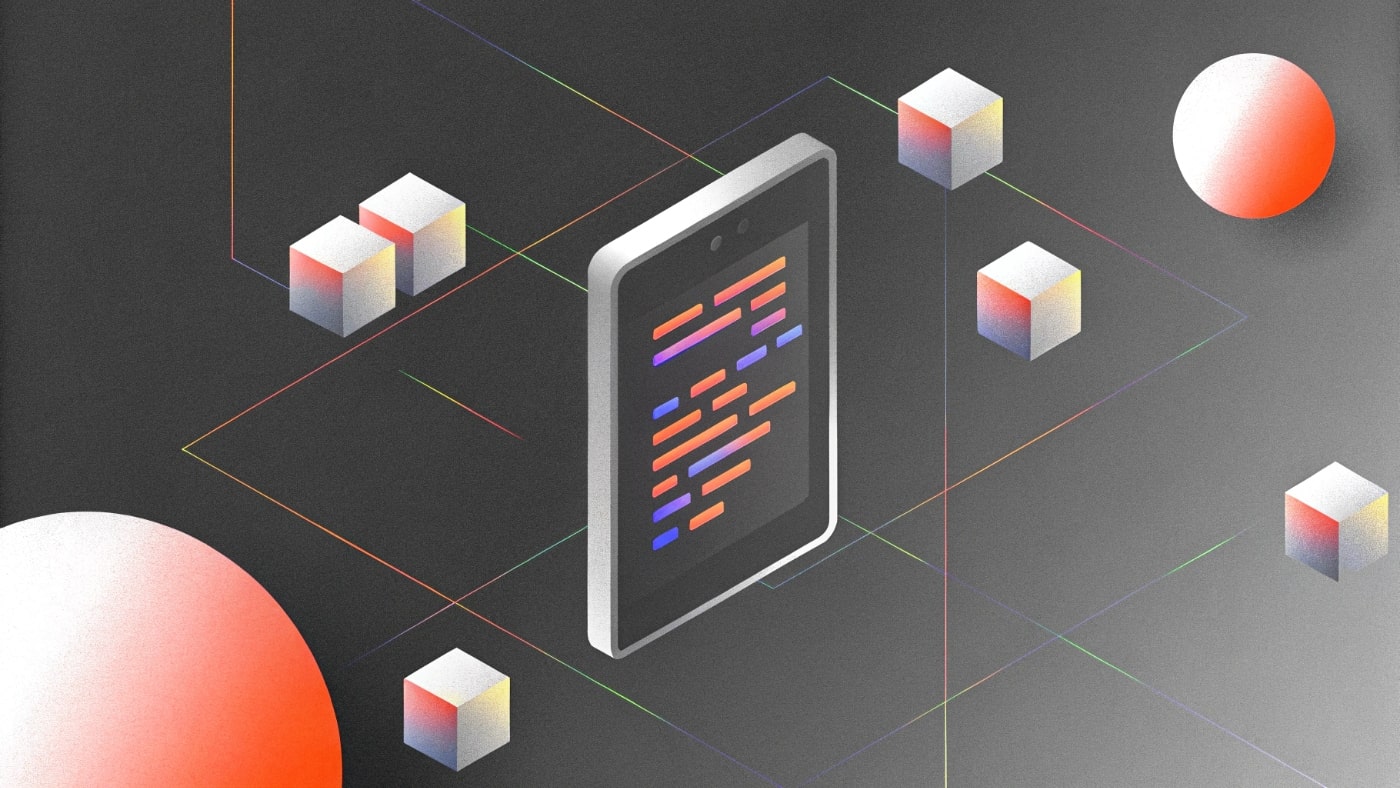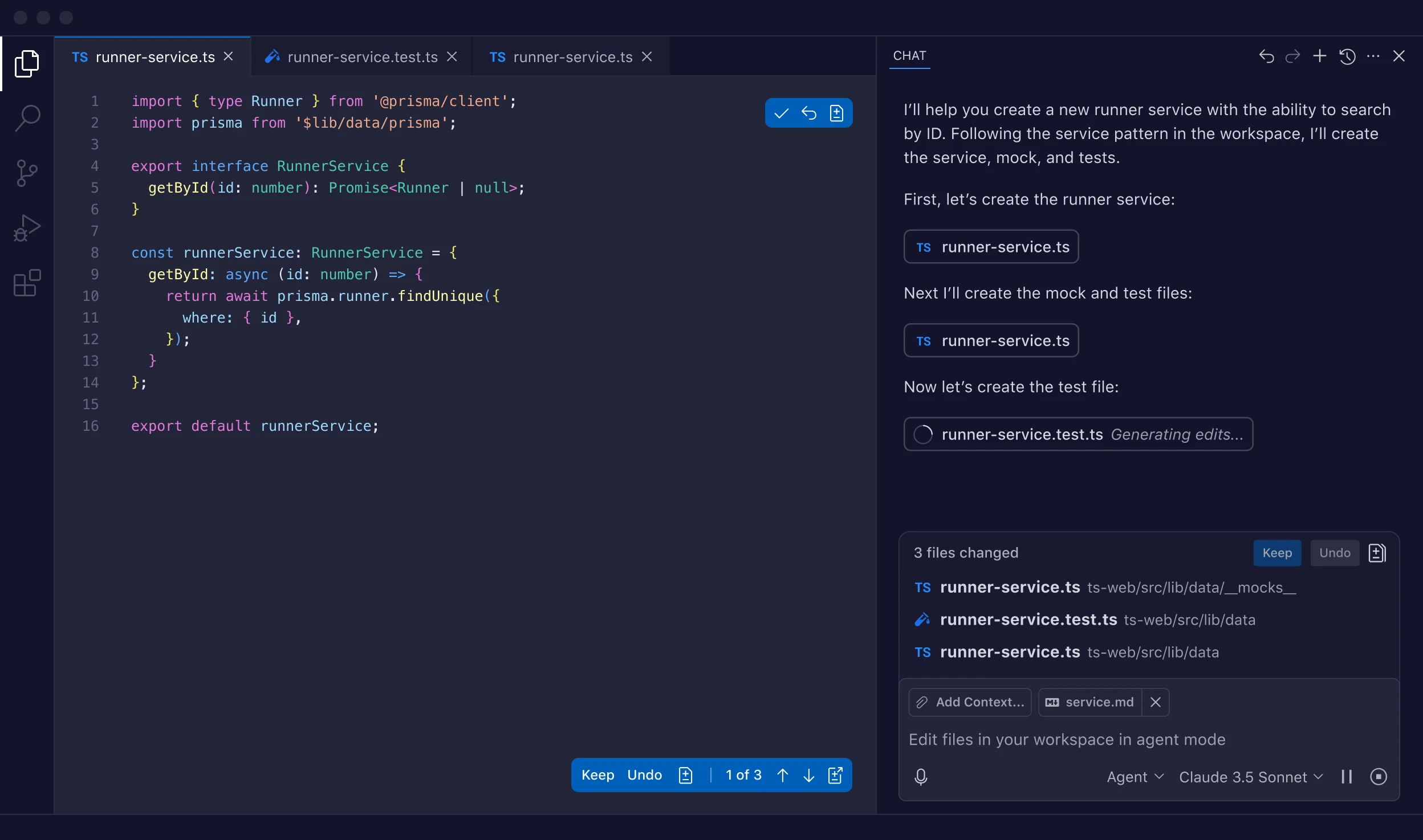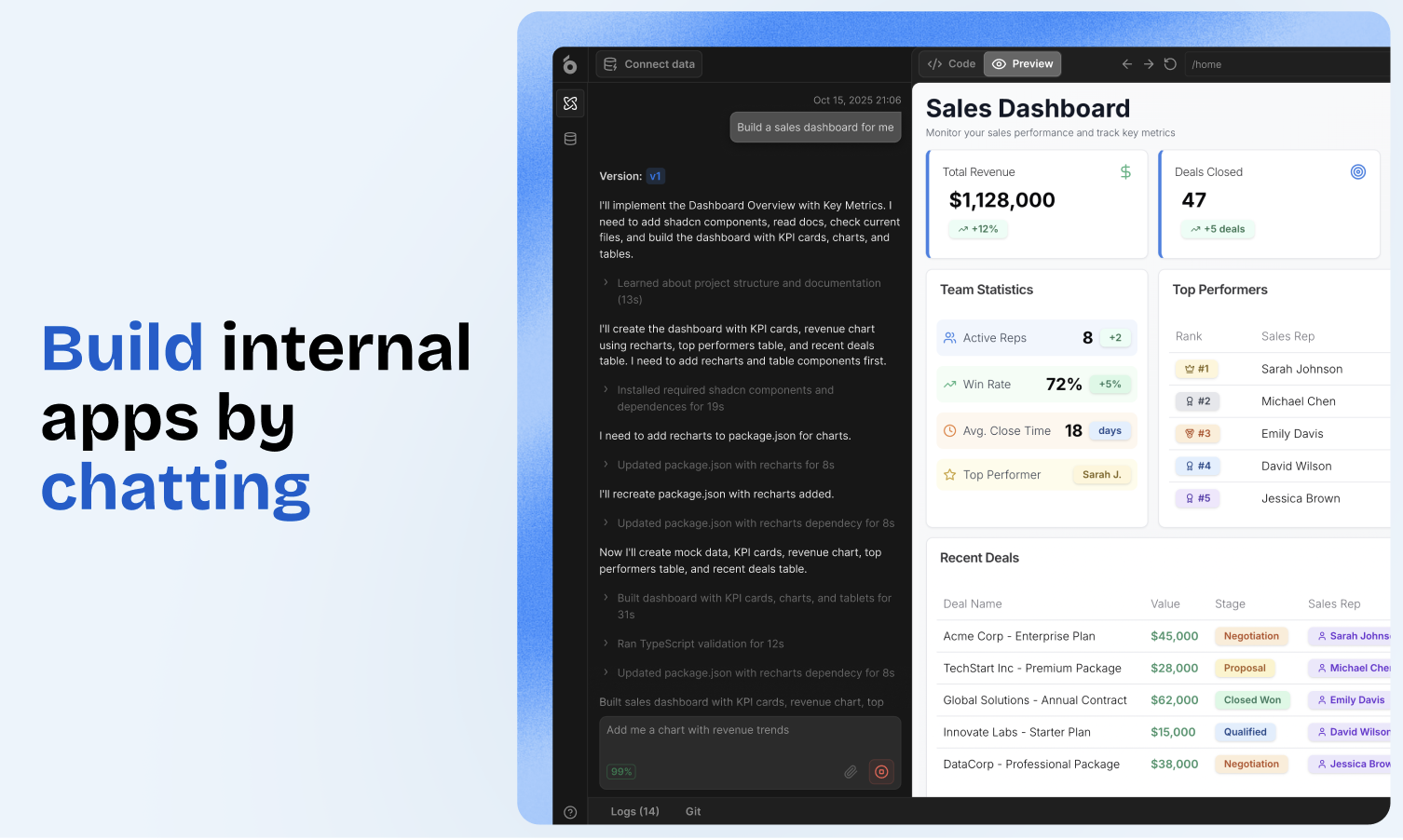
AI Coding Agents: Revolutionising Software Development
AI Coding Agents are evolving into autonomous collaborators, capable of generating code, designing architecture, writing tests, diagnosing bugs, and much more.
In this article, we’ll explore the leading coding Agents AI, explaining what they are used for, and where their limitations lie.
What are AI Coding Agents?
An AI coding agent is a system that uses a large language model (LLM) or related AI technology to assist or perform software engineering tasks. Depending on the tool you choose, they can:
- generate code from natural-language prompts,
- detect and correct errors,
- enforce coding standards and workflows.
- automate parts of CI/CD, version control, and even architecture decisions (though with limitations).
Ultimately, where traditional coding tools were passive, coding Agents AI aim to be active members of the development workflow.
GitHub Copilot

GitHub Copilot is an AI-powered Agent that provides code generating, explanations, and automated code implementations. It can autonomously execute multi-file changes, run terminal commands, fix its own errors, and loop to completion of a task.
Key features:
- Deep integration with GitHub environment (issues, pull requests, branches).
- LLM-based code generation from natural language task descriptions.
- Ability to run builds/tests, incorporate feedback, and iterate.
- Support external tools/services.
- Works across many languages and frameworks.
Advantages:
- Deep integration with the GitHub ecosystem: if your team already uses GitHub, this is seamless.
- Good autonomy: multi-file changes, error-fix loops reduce manual intervention.
- Strong infrastructure, governance features for enterprises.
- Good for standard tasks (boilerplate, test writing, CRUD functionality).
Limitations:
- May struggle with highly novel architecture or deeply domain-specific logic.
- Generated code still requires review – risk of subtle flaws or misalignment.
- Potential cost/licensing considerations depending on usage.
Best use cases:
- Medium-sized code changes (refactors, new features) in well-tested repos.
- Teams already on GitHub wanting to automate part of flow.
- Enterprises seeking governance/secure toolchain.
Claude Code (by Anthropic)

Claude Code is a purpose-built agentic tool designed for deep, multi-file changes across large codebases, making edits, commit, open PRs, debug, refactor in your development environment.
Key features:
- Deep codebase understanding: it can read, search, edit files, run shell commands.
- Multi-agent workflows: you can create “sub-agents” specialised for tasks.
- Security-first design: permission tiers (read-only vs edit vs shell).
- Git and PR integration: commit messages, open PRs, rebase etc built-in.
Advantages:
- Strong reasoning + autonomy, saving time.
- Rich features for multi-file refactors, complex tasks.
- CLI/terminal friendly , that is useful for engineers comfortable with shells.
- Flexible model selection and sub-agent workflows.
Limitations:
- Cost can be high for large tasks or frequent use.
- Needing for backups to reduce the risks.
- Learning curve + oversight required, that needing developer hands.
- Autonomy increases the risk of introducing unintended behavior or architecture misalignment.
Best use cases:
- Experienced engineering teams doing heavy refactoring, multi-file changes, complex features.
- Environments where CLI/git integration is important.
- Projects where deep autonomy can be trusted with human oversight.
Cursor AI (by Anysphere)

Cursor is an AI-powered code editor designed to enhance the coding experience. It helps developers write, debug, and optimize code. Agent integrates into your development environment, offering predictive edits, whole-codebase understanding, and natural-language to code translations.
Key features:
- Natural-language commands.
- Smart rewrite: multiple lines/blocks edited at once.
- With full codebase awareness, Cursor lets you command your codebase in natural language.
- Privacy mode: local code not stored remotely.
Advantages:
- Interface that suits devs who want seamless CI/editor integration.
- Fits into standard dev editor workflows: code edits, cleanup, refactoring.
- Lower cost and easier setup.
- Supports multiple languages.
Limitations:
- Focuses on developer productivity rather than full autonomy.
- Performance tends to taper off during prolonged or multi-file operations, making it less effective for long-duration or complex coding sessions.
- Limited tooling around CLI/PR automation compared to GitHub/Claude Code.
- May still require careful monitoring and manual review of suggestions.
Best use Cases
- Developers working primarily via a code editor (VS Code) who want to accelerate everyday work.
- Teams focused on incremental improvements, refactoring, and faster feature iteration.
- Smaller teams/individuals who want good ROI without heavy infrastructure.
Sourcegraph Amp

Sourcegraph Amp is an AI coding tool that helps developers automate daily tasks or large-scale code operations: refactoring at scale, documentation generation, across large codebases. This tool can see your whole codebase, compile code, run unit tests, make adjustments, compile again, etc.
Key features:
- Project-wide code understanding and editing.
- AI-powered refactoring, documentation, code-search plus editing together.
- Multi-step support: Unlike basic autocomplete, Amp supports planning, breakdown of tasks into subtasks, execution across multiple files, followed by review/diffing, then commit.
- Interface flexibility: Sourcegraph supports a CLI mode and is integrated into editors so it fits into developer workflows, not just a web UI.
- Targeted at enterprise use: large teams, complex codebases, code-search + agent combine.
Advantages:
- More functional than simple autocomplete - built around code-search + contextual edits.
- Pay-as-You-Go and credit model: Amp uses a credit model for usage, and free mode option with certain constraints.
- Integrates with existing knowledge-bases and code-search tools.
Limitations:
- Higher complexity/cost: more infrastructure, may require licence/enterprise subscription.
- Perhaps overkill for smaller teams or codebases.
- The autonomy may still be constrained by governance and monitoring.
Best use cases:
- Large organisations maintaining large monolithic or microservice codebases with many developers.
- Teams needing large-scale refactor, code-search + edit workflows, cross-team consistency.
- Enterprises prioritising governance, auditability, refactoring momentum.
Bonus tool: UI Bakery AI App Agent

UI Bakery’s AI Agent may not be a coding agent in the sense of writing back-end services, but is an excellent example of how AI agents are entering development workflows, especially for internal tooling.
UI Bakery lets you build internal business apps, CRUD dashboards, admin panels, forms, data-driven front-ends using natural language prompts, backed by your data (DBs/APIs).
Key features
- Connects to 45+ databases and APIs.
- Natural-language prompts to generate UI + code, scaffolding code so you’re not locked-in.
- Enterprise-grade security: SOC 2 compliance, RBAC, audit logs, on-prem/self-host support
Last thoughts
AI coding promises to reshape how software is built - moving from manual, repetitive tasks to human-AI collaboration where developers focus on strategy, design, and creativity, while agents handle the execution heavy-lifting. That said, successful adoption hinges on thoughtful integration, governance, and awareness of limitations.




